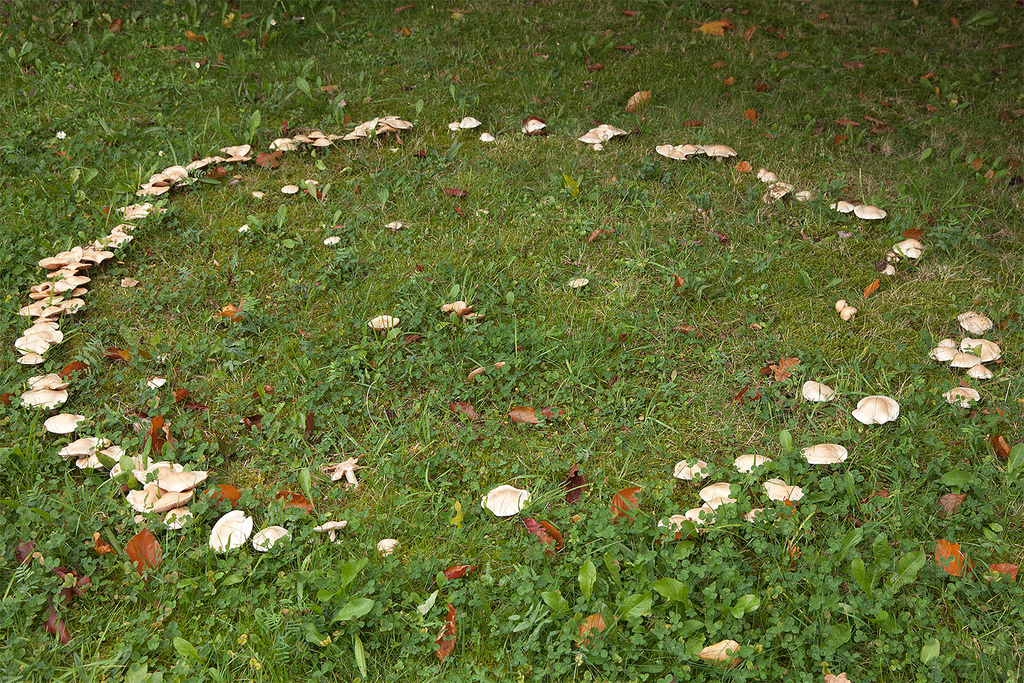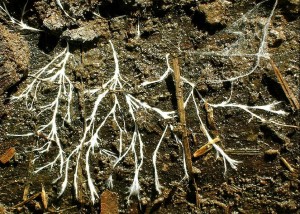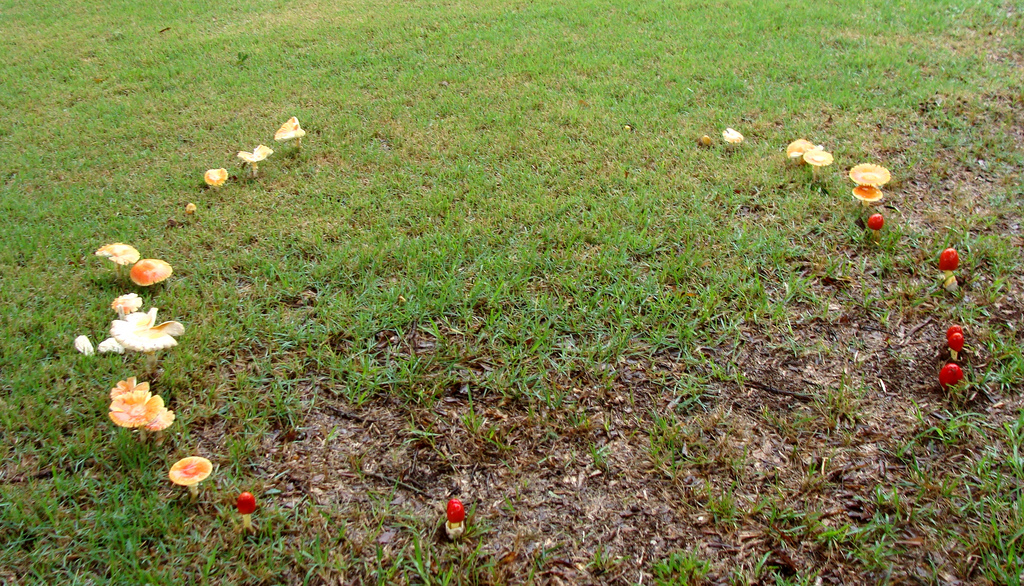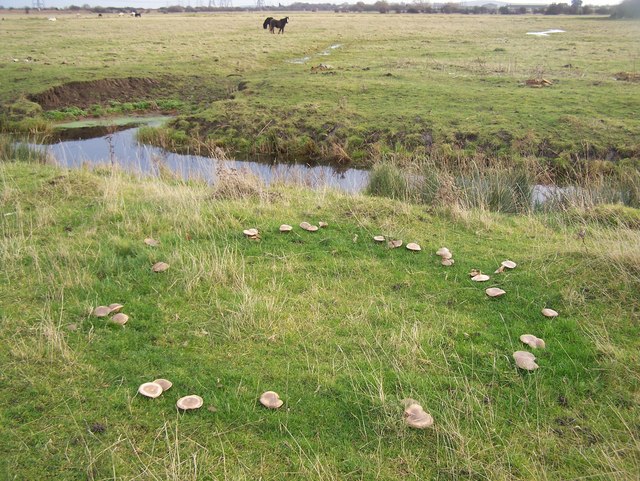Mushroom Circles or Fairy Rings What Are They?

Magic or Mundane?
One of the magic parts of summer, for me, is the appearance of mushroom circles and lightening bugs. Fairy rings have captured imaginations around the world, and they are found in folklore from Scandinavia to Europe and North America. They're even included in fairy tales called "The Fairy Ring: A Collection of Tales and Traditions" by Jacob and Wilhelm Grimm (1857).
There's some neat biology around mushroom circles (also called elf circles or pixie rings), but it makes them no less magical. So let's dive into to explore what is known about them.

There's More Going On Than What You See
To understand fairy rings you must first understand that mushrooms are really just the tip of the iceberg of what is going on, which is true for most plants and trees. Mushrooms are the fruiting bodies of fungus, much like apples or pears are the fruiting bodies of trees. The major difference is that while trees have trunks and leaves above ground, fungus doesn't. It has what you could consider the equivalent of "roots" underground, and these are called mycelium (my-seal-E-um). We've all seen mycelium, but you may not have known what it was. Think of when you turned over a piece of bark on the ground, or rolled a dead log, did you see some white tendrils or root like structures? That is mycelium. It's the true "body" or organism of a fungus.

Fungal mycelium act much like roots in that they push through the soil to gather nutrients. On the tips of the mycelium are tendrils called hypahe (high-fee) that secrete enzymes. These enzymes are like stomach acid and they break down large nutrients and molecules into smaller molecules that can be absorbed by the cells lining the mycelium and hyphae. Mycelium are super important in forests because they help to break down dead stuff, anything from animals to trees and they cycle nutrients back into the soil.
So What's Up With The Circle?
Mycelium can grow in different patterns. Some spread outward and look like lightening or cracking ice, growing with no discernible pattern except "outward", while others, like the mycelium of mushroom circles, grow in a predictable concentric patterns. There are nearly 100 species of fungus (some that are edible like the Scotch Bonnet) that grow in a ring formation, and there are two types of rings that you can find.

The first ring type is typically found in the woods and is called "tethered." Tethered mushroom circles have a tree in the center. In this case the fungus depends on food from a "point" or central source and is living in the roots of the tree. [The fungus is called mycorrhizal (my-core-I-zal) fungus.] This is a type of mutualism, because the fungus benefits from the "housing" of the tree roots and the tree gets nutrients from the mycorrhizal fungus.

The second fairy ring formation is called "free" or simply a ring of mushrooms without a tree in the center. These are almost always found in grassy areas or turf.
Now For The Neat Bit...
Alright, so we know fungus grows underground as mycelium, but what causes the mushrooms to grow in circle pattern around the edges? Fungus that grows in fairy rings starts with a small spore and its mycelium pushes outward evenly in a circular pattern. As it pushes outward it secretes the enzymes that begin digestion of nutrients in the soil. When you look at a fairy ring growing in grass and is not tethered, you'll notice that the center of the ring is lighter in color than the outer part where the mushrooms are found. This is because the hungry cells of the mycelium have used up all of the nutrients in the soil as they moved outward. Essentially the center of the ring is a "dead zone" (necrotic area) or nutrient depleted area.

As the fungus grows it is stretching outward to find more nutrients and food leaving behind a nutrient poor circle inside the ring. The outer ring of the circle (when found in grass) is darker green because that is where the hyphae are starting to break down nutrients in the soil. That makes the soil temporarily richer with more available nutrients and thus a darker green grass. In some cases (like the photo below) you may see a green ring of grass without the fruiting body of the fungus. This is a mushroom circle without the mushrooms (either they haven't come up yet or they are dead already).

It Can't Go On Forever
Fairy rings or fungal mycelium will continue to grow outward (year after year) until they run out of nutrients, the fungus runs into another fungal ring, or it hits a barrier (such as a log, wall, driveway, etc). Fairy rings are commonly found/observed on manicured lawns and urban areas because the fungus can grow in a nice big ring uninterrupted. In forests this isn't always the case, and more often than not the "circle" gets interrupted or broken before it gets very large. One of the largest known was found in France, and it was about 2,000 ft in diameter, and thought to be over 700 years old!
Theoretically almost any species of mushroom could grow in a fairy ring, but there are certain species that are more commonly found, such as the poisonous toadstool (Amanita muscaria), the Scotch bonnet (Marasmius oreades), the green-spored lepiota (Chlorophyllum molybdites), the purple-spored puffball (Calvatia cyathiformis), the poisonous death cap (Amanita phalloides) and more. Some of these are edible and some are very much dangerous stuff, so it's best to avoid eating any of them unless you're a fungal expert.

Although there are many warnings about fairy rings in folk lore about avoiding stepping in them, the biological explanation is no less mysterious and magical. Next time you're walking through the woods, or passing a lawn, look for the mushroom circles and a bit of summer magic. If you watch very closely, you might even see fairies dancing!

